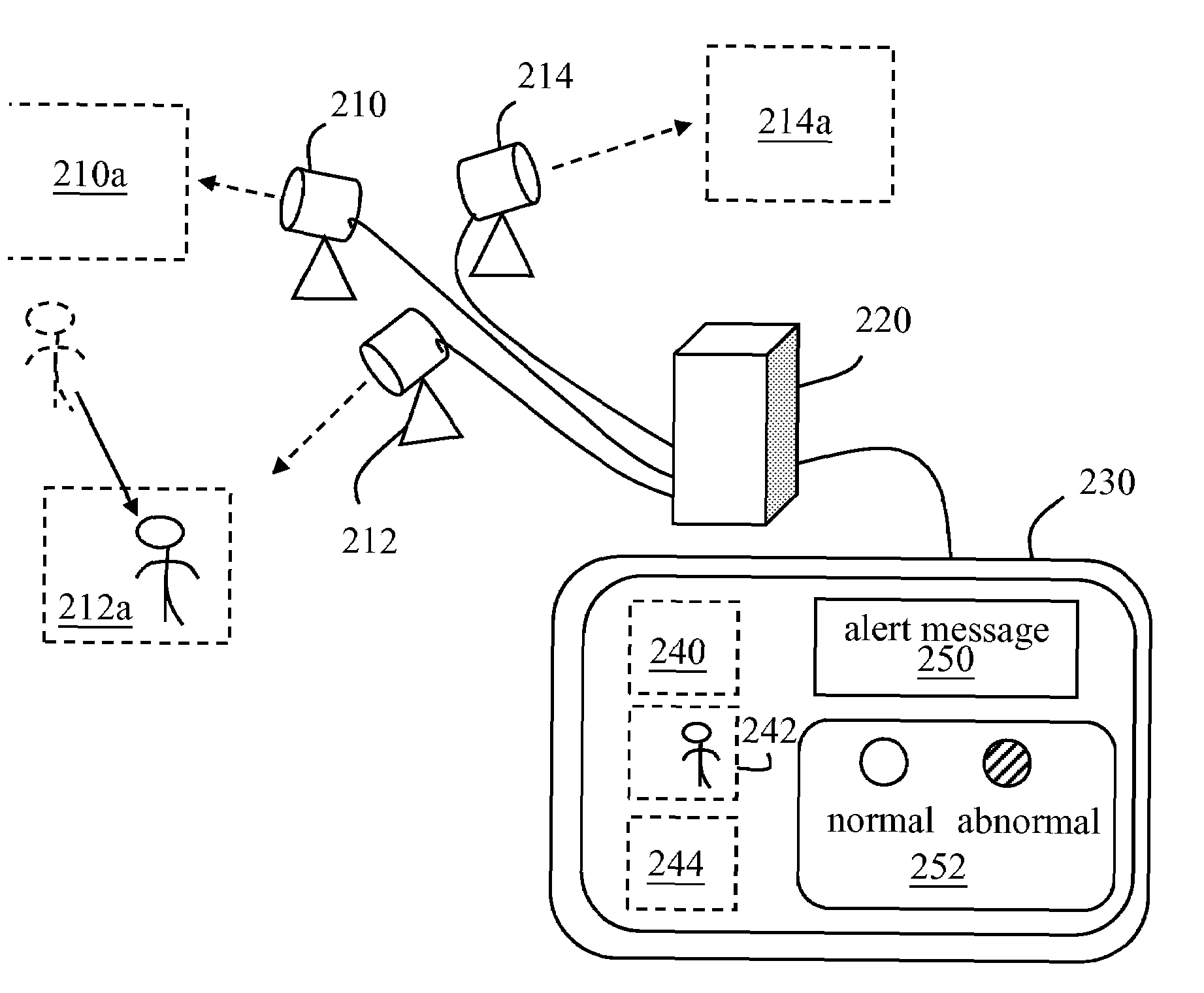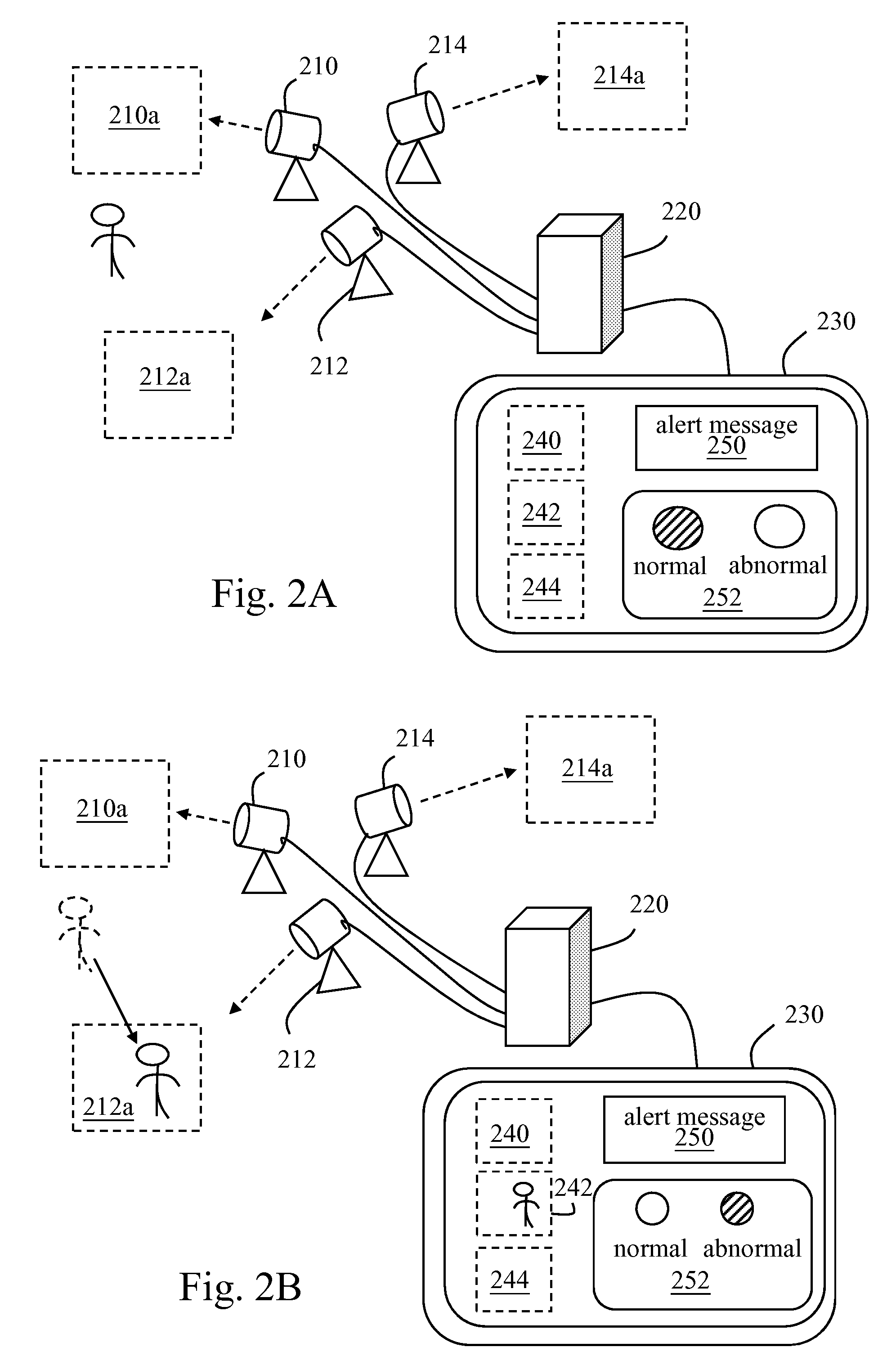Image Detection Method
a detection method and image technology, applied in the field of image detection methods, can solve the problems that the current monitoring system cannot detect such abnormal phenomena, and consider them abnormal, and achieve the effect of prolonging reducing the interval of performing the step of detecting image chang
- Summary
- Abstract
- Description
- Claims
- Application Information
AI Technical Summary
Benefits of technology
Problems solved by technology
Method used
Image
Examples
first embodiment
The First Embodiment
[0020]FIG. 1 is a flow chart of an image detection method. Referring to FIG. 1, in the first embodiment, the image detection method includes: first, capturing at least one consecutive image shot by a camera (Step S10); then, setting at least one anchored frame for the consecutive images (Step S120); next, setting the images in the anchored frames to change in a time parameter (Step S130); at this time, performing a step of determining the image change, and outputting a first signal when the images change in the time parameter (Step S140); finally, setting the images in the anchored frames not to change in the time parameter (Step S150); at this time, performing the step of determining the image change, and outputting a second signal when the images do not change in the time parameter (Step S160).
[0021]Accordingly, a third signal is output when the images in the anchored frames are set to change in a period of time but do not change, and on the contrary, a fourth ...
second embodiment
The Second Embodiment
[0027]A practical example is provided by the second embodiment to clearly illustrate the technique of the present invention. FIGS. 2A and 2B are schematic views of the system architecture of applying the image detection method to a remote detection system. Sequentially referring to FIG. 2A and FIG. 2B, in this preferred embodiment, three cameras (210, 212, 214) are used to respectively monitor three monitored regions (210a, 212a, 214a), and send the shot pictures to a computer 220 to be displayed on a screen 230. Before shooting, the user adopts an image detection application software installed in the computer 220 to set anchored frames (240, 242, 244), and the anchored frames are regions in the pictures that the user is interested in. The screen 230 not only shows the anchored frames (240, 242, 244) in the shot pictures, but also other stuffs such as an alert message 250 and an alert lamp 252. Referring to FIG. 2A, nobody is allowed to enter or exit from the se...
third embodiment
The Third Embodiment
[0029]In a third embodiment, for example, the image detection method is applied to an interactive computer game, like Dance Dance Revolution (DDR). FIGS. 3A and 3B are schematic views of the system architecture of applying the image detection method to an interactive computer game system. Sequentially referring to FIG. 3A and FIG. 3B, the game goes like this: a user stands in the region detectable by a camera 310, and moves following the hints shown by arrows on a screen 330. If the player finishes the movements exactly according to the hints, a high score is given and the game is over.
[0030]The camera 310 shoots the monitored region (i.e., the moving range of the player), and transmits the shot images to a computer 320. The monitored region 310a is divided into multiple anchored frames (312, 314, 316, 318), corresponding to arrows in the front row of the screen (arrows indicating four directions of up, down, left, and right). During the game, movements are desig...
PUM
 Login to View More
Login to View More Abstract
Description
Claims
Application Information
 Login to View More
Login to View More - R&D
- Intellectual Property
- Life Sciences
- Materials
- Tech Scout
- Unparalleled Data Quality
- Higher Quality Content
- 60% Fewer Hallucinations
Browse by: Latest US Patents, China's latest patents, Technical Efficacy Thesaurus, Application Domain, Technology Topic, Popular Technical Reports.
© 2025 PatSnap. All rights reserved.Legal|Privacy policy|Modern Slavery Act Transparency Statement|Sitemap|About US| Contact US: help@patsnap.com



